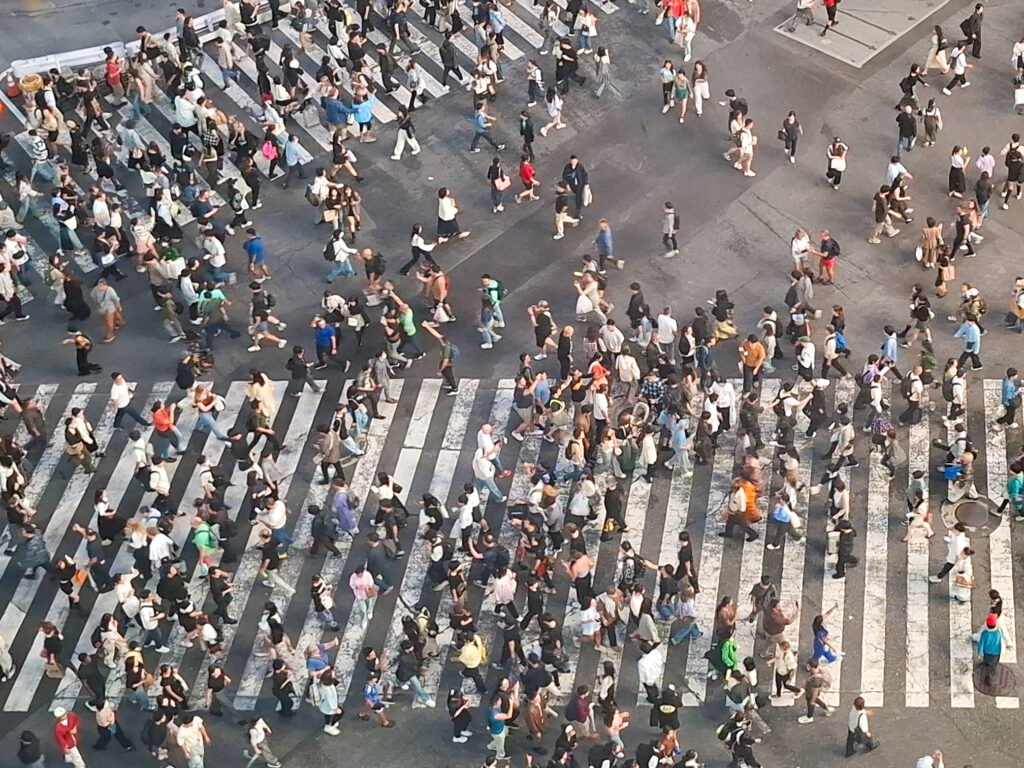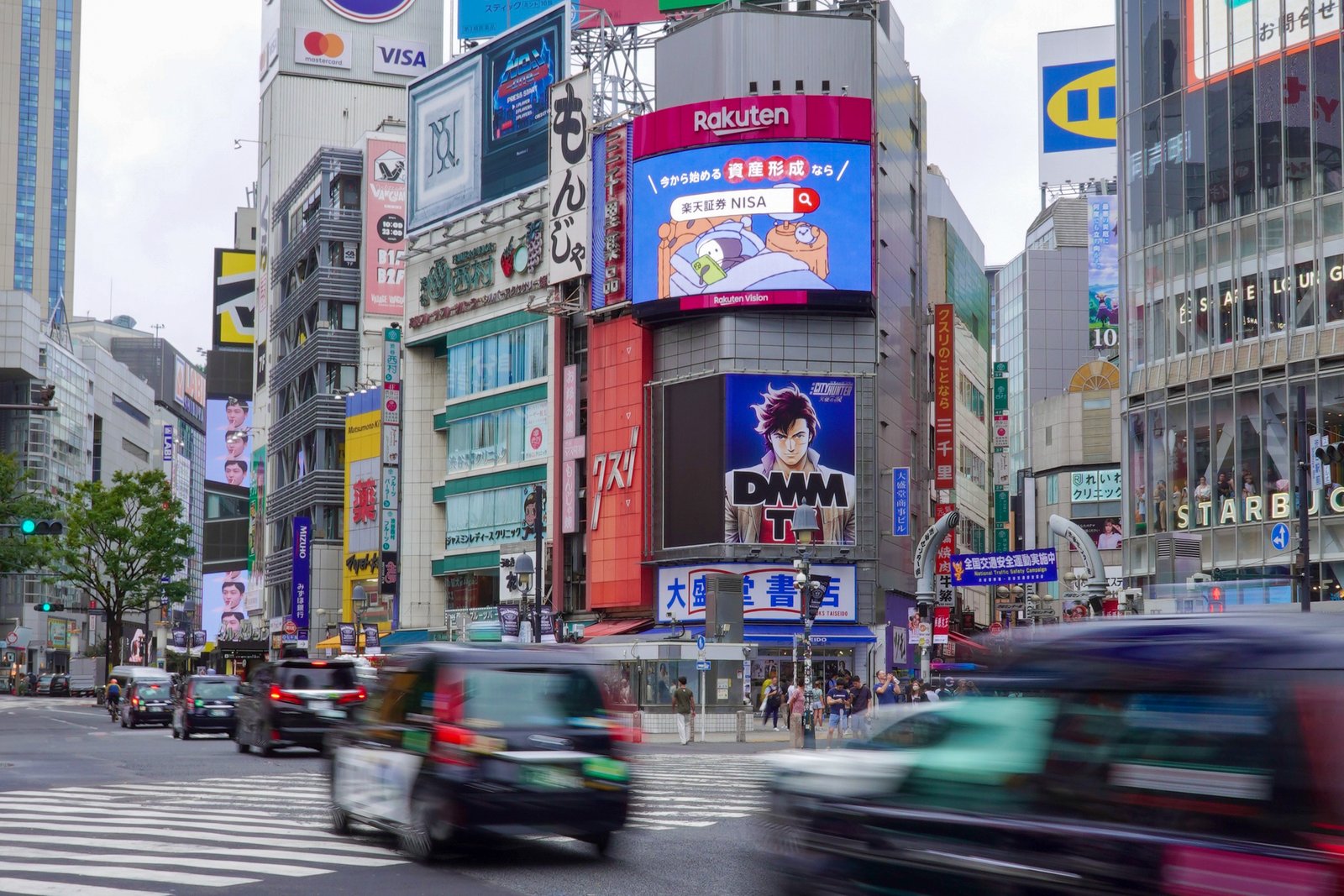The Best Way to Spend a Day in Shibuya
If you have a few days to explore Tokyo and you want to take it neighbourhood by neighbourhood, Shibuya is a fantastic place to start!
It is chaotic, creative, youthful, and full of energy, and yet, it offers surprisingly peaceful escapes just around the corner. We spent our first full day in Tokyo exploring this iconic neighborhood, and by the end of it, we were completely hooked. Here is our take on the best way to spend a day in Shibuya: relaxed, curious, and with just the right mix of famous landmarks, green spaces, and hidden gems.
First things First: What is Shibuya?
Shibuya is one of Tokyo’s 23 special wards, and it is best known as the epicenter of youth culture, fashion, and nightlife. With its towering digital billboards, trendy shops, and nonstop buzz, it is because of Shibuya Crossing often compared to Times Square. But make it Japanese, more efficient, and (somehow) both louder and more polite at the same time.
Historically, Shibuya grew as a commercial and entertainment hub around Shibuya Station, which is one of the busiest railway stations in the world. Over 2 million people pass through it daily. And as soon as you get out of Shibuya Station, there it is, Shibuya Crossing. But Shibuya is far more than just the crossing, it is also the place where many global trends start before they spread across the rest of Japan.
Morning coffee and Shibuya Crossing
We kicked off our Sunday morning the right way: with a slow coffee at the first floor at the L’Occitane cafe and a front-row view of Shibuya Crossing, the world’s busiest pedestrian intersection. If you have seen any Tokyo montage in a movie, you have probably seen it: hundreds of people crossing in every direction, all at once, surrounded by giant LED screens and flashing lights. Fun fact: During peak hours, up to 3,000 people can cross at once. It is mesmerizing to watch, like a perfectly choreographed ballet of urban life.
Watching from above is cool (save for later!), but we actually loved just sitting at street level, letting the crowd flow past us. That early in the morning, it is a little calmer, and you can really take in the magic. And we saved the craziness and neon lights for later that day.
After coffee, we visited one of Shibuya’s most photographed residents: Hachiko, the loyal dog. His bronze statue sits just outside Shibuya Station. The story goes that Hachiko waited every day for his owner to return from work, even after the man passed away. For nine years, he returned to the station daily until his own death. His loyalty made him a national symbol of devotion. You will find the statue near the Hachiko Exit of Shibuya Station, and yes, Geert took a picture with him.

Midday wandering: parks, streets, and surprises
We let the rest of the day unfold naturally in Shibuya, and that is how we found ourselves suddenly in a traditional Japanese parade on a random side street. No idea what it was for, but we loved it. That’s Tokyo for you: always full of unexpected little gems.
From there, we made our way to Yoyogi Park, one of Tokyo’s largest green spaces. On weekends, the park fills up with families, street performers, dancers, musicians, cosplay people and everything in between. It is the perfect place to relax and recharge.
Did you know? Yoyogi Park was the site of the 1964 Tokyo Olympic Village. Before that, it was used as a military parade ground and even as a U.S. military housing area after WWII. In the park, we stumbled across something rather unique: a simulated earthquake experience. You can test what a real tremor feels like, not your average Sunday activity! Geert gave it a try. We would say it is both educational and mildly terrifying.
Takeshita Street and Cat Street
After our nature break, we dived straight back into Tokyo’s buzzing pop culture scene with a walk through Takeshita Street in nearby Harajuku. This street is completely bonkers, in the best possible way.
Imagine cotton candy the size of your head, cafe’s where you drink tea surrounded by micro pigs, crepe stands on every corner, and teens dressed in full cosplay. It is colorful, chaotic, and definitely a must-see. We skipped the pig cafe’s, but we did enjoy the people-watching.
From there, we strolled down Cat Street, a much calmer, hipper stretch with boutique shops, indie fashion, and artful cafes. It is like the cool older sibling of Takeshita.

The best way to spend a Day in Shibuya
Shibuya crossing is not just for pedestrians
A taste of luxury on Omotesando Avenue
We continued our walk toward Omotesando Avenue, Tokyo’s answer to the Champs-Elysees or PC Hooftstraat? Lined with upscale boutiques and stunning modern architecture, it is a complete contrast to the teen chaos of Takeshita but interesting to walk through. Even if you are not shopping for designer bags, it is worth the stroll. The buildings here are like works of art, and the people-watching is next level. It also makes a great break before heading into a more spiritual space: the Meiji Shrine.
Finding peace at Meiji Shrine
Tucked between Yoyogi Park and Harajuku Station lies Meiji Shrine, one of Tokyo’s most important Shinto shrines. It is dedicated to Emperor Meiji and Empress Shōken, who helped modernize Japan in the late 19th century.
Things to know:
- The shrine was originally completed in 1920, destroyed in WWII, and rebuilt in the 1950s.
- The forest surrounding the shrine includes over 100,000 trees donated from across Japan.
- The main entrance is marked by an enormous wooden torii gate that feels like a portal to another world.
As you walk through the tranquil grounds, you will spot massive barrels of sake and wine, offered as symbolic gifts to the gods. Inside the shrine complex, it is customary to purify your hands at the basin and offer a coin, bow twice, clap twice, and bow once again when praying.
The contrast between the neon streets of Shibuya and the calm of Meiji Shrine is impressive.
Sushi, skylines, and one last 'Crossing'
As afternoon ended, we found a cozy sushi spot to unwind and refuel. It does not have to be fancy, even casual conveyor belt places in Tokyo serve top-quality sushi. The freshness, the variety, the precision, sushi in Japan really is on another level.
We timed it so that we could head back to Shibuya Crossing just arond sunset. And whoooa, if you thought it was impressive by day, wait until you see it at night. The LED screens glow even brighter, and the energy is electric with huge crowds. It is a different kind of buzzing beautiful.
To finish off the day, we went up to Shibuya Sky, the open-air observation deck atop the Shibuya Scramble Square building.
Entry tip: Book your tickets online in advance (¥1180 for adults). It can get crowded, especially during sunset. But the 360-degree views over Tokyo are absolutely worth it. From the rooftop, you can see Shibuya Crossing from above, spot Tokyo Tower in the distance, and even catch a glimpse of Mount Fuji on a clear day.
It was the perfect ending to a long, fulfilling, and unforgettable day.
If you want a day that captures the full spectrum of Tokyo’s personality, from hyper-modern crosswalks to ancient rituals, from sensory overload to deep calm, Shibuya delivers.
Take your time. Wander aimlessly. Drink good coffee, or sake… Watch the world go by. Shibuya is not just about ticking off landmarks; it is about feeling the pulse of Tokyo up close. Especially on your first day!
And the best part? There are so many more neighborhoods waiting for you the next day….
Shinjuku, anyone?
Have tips or experiences to share? Drop us a message or find us on Instagram for more pictures of Shibuya, we would love to hear from you!
The Booming Journey | 4 May 2025 | ©all rights reserved